 |
 |
 |
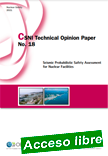 |
Seismic Probabilistic Safety Assessment for Nuclear Facilities
CSNI Technical Opinion Paper - No. 18
Nuclear Energy Agency NEA No. 7486, OECD - Nuclear Safety 2021
Seismic probabilistic safety assessment (SPSA) is a systematic method for examining and evaluating the risk from earthquake-initiated accidents. The significant advances in the area of SPSA since the initial publication in 2002 of the NEA/CSNI Technical Opinion Paper (TOP) No. 2: Seismic Probabilistic Safety Assessment for Nuclear Facilities have prompted a revision of the document.
|
The purpose of this revision is to provide the up-to-date international view on the state of the SPSA as it is currently being applied, including a description of the main elements of SPSA. The revision was written by seismic PSA experts of the NEA Working Group on Risk Assessment (WGRISK) member countries. The initial draft and subsequent updates were presented to WGRISK for review and comments. In addition, comments were obtained from seismic experts of the Working Group on External Events (WGEV) and Working Group on Integrity and Ageing of Components and Structures (WGIAGE).
|
 |
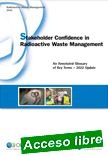 |
Stakeholder Confidence in Radioactive Waste Management: An Annotated Glossary of Key Terms
Nuclear Energy Agency NEA No. 7606, OECD - Radioactive Waste Management 2022 Update
The OECD Nuclear Energy Agency (NEA) Forum on Stakeholder Confidence (FSC) acts as a centre for informed exchange of knowledge and experience regarding stakeholder interaction and public participation in radioactive waste management. It promotes an open discussion among members and stakeholders, across institutional boundaries, and between technical and non-technical actors, in an atmosphere of trust and mutual respect.
|
Since its foundation in 2000, the FSC has used and developed a set of terminology and concepts. Fostering a Durable Relationship between a Waste Management Facility and its Host Community: Adding Value through Design and Process (NEA, 2007a) included a five-page glossary of terms that appeared central to understanding the innovative concepts put forward in that major report. The annotated glossary was prepared on the basis of a review of the full range of FSC publications across the past decade, and discussions with the NEA Secretariat and the FSC Bureau.
|
 |
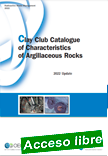 |
Clay Club Catalogue of Characteristics of Argillaceous Rocks
Nuclear Energy Agency NEA No. 7249, OECD - Radioactive Waste Management 2022 Update
The NEA Clay Club has been gathering the key geoscientific characteristics of the various argillaceous formations that are – or have been – studied in NEA member countries in the context of radioactive waste disposal, resulting in the publication of the Clay Club Catalogue of Characteristics of Argillaceous Rocks in 2005. This publication builds upon the 2005 NEA report by providing updated datasets for a select number of argillaceous formations presented in the previous report, as well as an expanded discussion of:
|
the formations and their properties; the nuclear waste management organisations responsible for the implementation of the deep geological repository concept; the design concept proposed for a deep geological repository in the respective countries and rock formations; and some of the favourable properties of said argillaceous formations. A key goal of this report is to present the data in a manner that allows reasonable comparability (in both scale and methods) of the included parameters, in order to support the formal assessment and demonstration of the capacity of clay-rich formations to securely contain and isolate nuclear waste from the natural environment.
|
 |
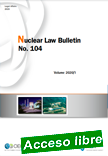 |
Nuclear Law Bulletin No. 104
Nuclear Energy Agency NEA No. 7533, OECD, Volume 2020/1
The Nuclear Law Bulletin is a unique international publication for both professionals and academics in the field of nuclear law. It provides readers with authoritative and comprehensive information on nuclear law developments. Published free online twice a year in both English and French, it features topical articles written by renowned legal experts, covers legislative developments worldwide and reports on relevant case law, bilateral and international agreements as well as regulatory activities of international organisations.
|
The 104th edition of the Nuclear Law Bulletin includes Case Law from Australia, Japan and the United States, as well as national reports from nine countries, reports on intergovernmental activity and the complete text of the Exposé des motifs of the Paris Convention as amended by the Protocols of 1964, 1982 and 2004 and the Recommendation on the application of the reciprocity principle to nuclear damage compensation funds.
|
 |
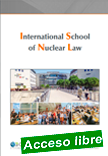 |
ISNL Commemorative Brochure
Nuclear Energy Agency NEA No. 7607, OECD, International School of Nuclear Law, October 2021
The International School of Nuclear Law (ISNL) Commemorative Brochure highlights the history, academics and unique features of the ISNL that contribute to the "Spirit of Montpellier". In addition, the Brochure presents a yearbook of participants since the ISNL programme began in 2001. It is hard to remember that a programme with over 1 000 alumni from more than 100 different countries began as na experiment between our two organisations almost two decades ago.
|
But now, the two-week International School of Nuclear Law (ISNL) in Montpellier has become an institution. Over the course of the past twenty years, this “summer school” in international nuclear law founded by Mr Patrick Reyners (former Head of Legal Affairs at the OECD Nuclear Energy Agency – NEA) and Mr Pierre Bringuier (formerly Professor at the University of Montpellier – UM) has solidified into the only continuous university programme in international nuclear law.
|
 |
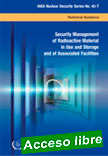 |
Security Management of Radioactive Material in Use and Storage and of Associated Facilities
IAEA Nuclear Security Series No. 43-T ¦ STI/PUB/1951 ¦ 68 pages ¦ Date published: 2022
Security management for radioactive material in use, storage and associated facilities includes the establishment and implementation of policies, plans, procedures and processes for the security of radioactive material. Security management assists to ensure that the security systems are effective, reliably operated and maintained with the necessary resources.
|
Based on extensive input from technical and legal experts, this publication sets forth security management as an essential tool to verify that personnel, procedures and equipment operate interdependently and in an integrated manner, and that the leadership and personnel responsible for security demonstrate the highest commitment towards promoting a robust nuclear security culture within the organization. This Technical Guidance references and takes into account other IAEA Nuclear Security Series publications that provide guidance relating to security managementThe document further provides guidance , including on the development of a security plan for radioactive material in use and in storage and for associated facilities. The Security Plan is an essential component of an operators licensing submission package. This Technical Guidance takes into account other IAEA Nuclear Security Series publications that provide guidance relating to security management and relating to security plans.
|
 |
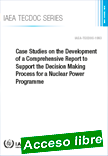 |
Case Studies on the Development of a Comprehensive Report to Support the Decision Making Process for a Nuclear Power Programme
IAEA-TECDOC-1993 ¦ 74 pages ¦ 16 figures ¦ Date published: 2022
Engaging in a nuclear power programme is a major undertaking with long term implications for at least hundred years. Key factors that may influence decision makers in their commitment to a nuclear power programme are of different nature, including political, socio-economic, financial, environmental, technical, or public acceptance.
|
In line with the guidelines of the IAEA Milestones Approach, a comprehensive report corresponds to the attainment of Milestone I (ready to make a knowledgeable commitment to a nuclear power programme) and provides the rationale and strategy for pursuing a nuclear power programme, supporting the development of a national position. This publication intends to support Member States that are developing comprehensive reports by sharing the experience of the ones that have already completed this process or are well advanced on this path. The publication highlights similarities and differences in the approaches adopted, recognizing that there are several different ways and formats for developing such a report.
|
 |
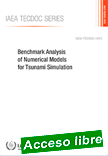 |
Benchmark Analysis of Numerical Models for Tsunami Simulation
IAEA-TECDOC-1973 ¦ 146 pages ¦ 76 figures ¦ Date published: 2022
In recent years there has been an evolution in numerical models used to compute tsunami propagation and run-up. Many models currently available offer a wide array of choices to the users. In parallel with the development of such numerical models, it is important that the user only applies the verified and validated numerical models that have undergone a benchmark analysis.
|
This publication provides information and benchmark problems to enable engineers and regulators to select the most appropriate tsunami analysis software and modelling for the evaluation of tsunami hazards for nuclear installations to ensure their safety against those events. In addition, the benchmark problems will enable such users to become familiar with the limitations of the tsunami analysis modelling available in research and commercial software.
|
 |
| |
|
|
 |
| |
|
|
 |
| |
|
|

|
|
|
| |
|
|
| |
| |
|
|
| |
| |
|
|
| |
| |
|
|
|
| |
| |
